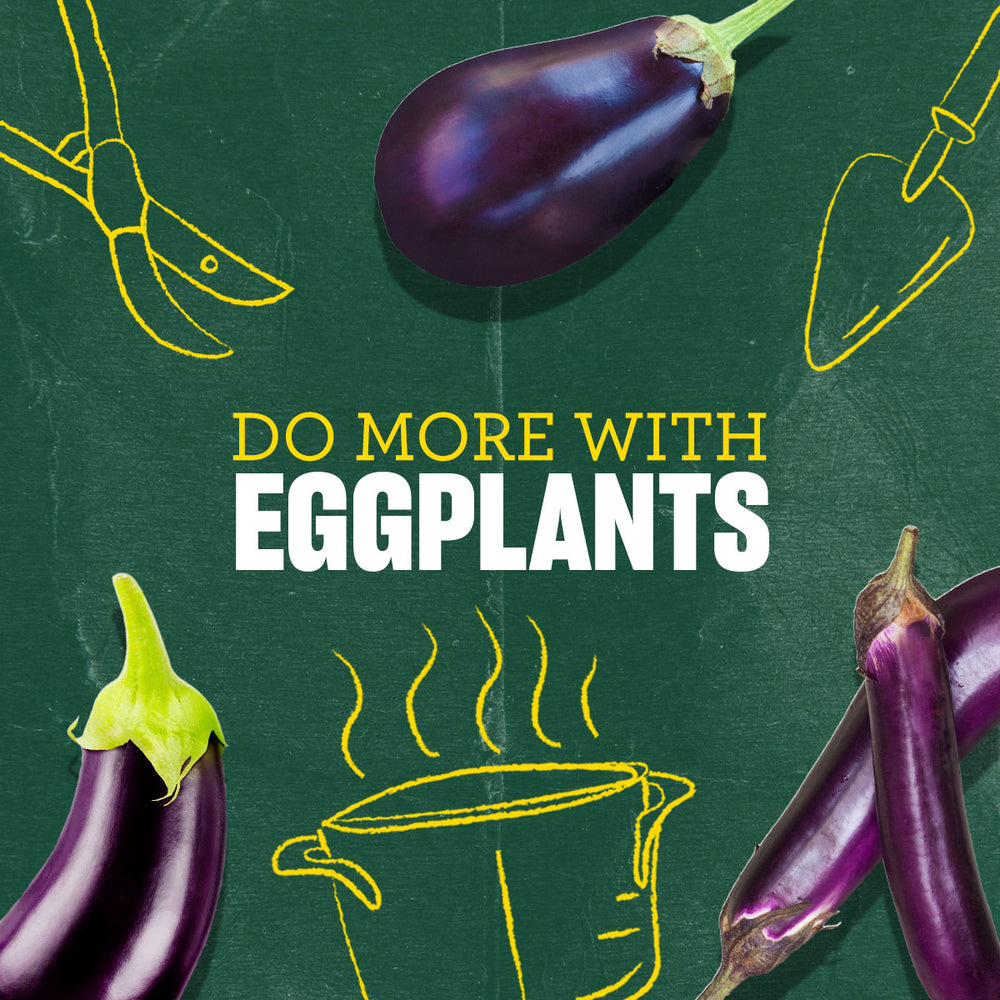You may know that eggplants go by another name (aubergines), but did you know that they’re technically a fruit? We think of them as vegetables, but since they grow from a flowering plant and contain seeds, they’re technically a fruit belonging to the nightshade family — along with tomatoes, peppers, and potatoes.
Eggplants are full of other surprises too — from health benefits to how easy they are to cook. Low in calories and rich in nutrients, eggplants could even help your cholesterol levels and heart health. They’re brimming with fiber and antioxidants, incredibly versatile for cooking, and especially perfect for those hearty fall and winter meals.

Black Beauty Eggplant
Often seen as the classic eggplant, these big and beautiful purple-black veggies are used in lots of well-known recipes, from eggplant parmesan and ratatouille to baba ganoush and veggie burgers. No matter what you make, it’ll be delicious.
Patio Baby Mini Eggplant
Good things come in small packages, and that’s especially true when it comes to these eggplants. Their taste is never bitter, and they’re super easy to cook with.
Ichiban Eggplant
These Japanese eggplants are slim, thin-skinned, and 10-inches long, with a taste that’s both sweet and mild. It’s the perfect choice for grilling and roasting as a side.
Whether you prefer Black Beauty or Ichiban, the best part is getting to enjoy them.

What to do with your eggplants
- Cooking: Eggplant is the star of so many warming winter dishes. Enjoy Ratatouille Salad with Japanese Eggplant warm or cold, or try your hand at Yiayia’s Eggplant Keftethes. If you love the smoky taste of roasted eggplant, check out our recipe for Roasted Eggplant with Herbed Labneh. And who doesn’t love a classic (but simple) Easy Eggplant Parmesan?
- Preserving: If you’ve got a big bounty of eggplants, there are two great ways to preserve them.
Freezing
Before freezing your eggplants, it’s important to blanch them. This will help prevent loss of flavor, color and texture, while preserving the vegetable’s nutrients. Simply slice the eggplant into ¼ inch slices, bring a pot of water to a boil, and blanch the slices for five minutes. Plunge them into ice water afterwards for about five minutes, then lay the slices in a single layer onto a cookie sheet and place them in the freezer. After five or six hours, place the slices in a sealable bag or container. This last step will ensure the slices are firm and prevent them from clumping together.
Pickling
This method is often overlooked for eggplants, but it’s an easy way to preserve them, and it tastes great, too. Start by slicing your eggplant into strips and placing them on a baking sheet with whole, peeled garlic cloves. Drizzle them with olive oil and sprinkle with salt, then roast at 425° for 30 minutes. After it’s done roasting, you can sprinkle it with chopped parsley and pack it in a sealable jar. Pour white vinegar into the jar covering the eggplants, and store in your fridge for up to two months.
3. Donation: If you’ve got extra eggplants to spare, the folks at AmpleHarvest.org can take them off your hands. By donating your bounty, you’ll help to provide hungry families with fresh, nutritious produce.
You’re all set to get cooking, start preserving, and to savor the eggplants from your garden.





 Herbs
Herbs
 Vegetables
Vegetables
 Fruit
Fruit
 Flowers
Flowers
 Succulents
Succulents

